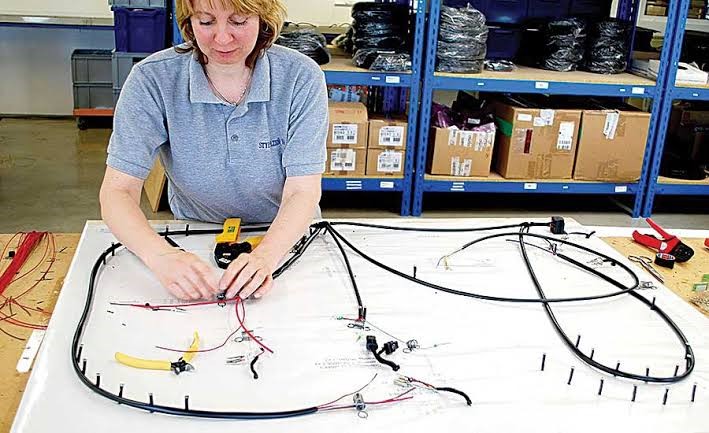What Has Happened with Cable Testing Standards in IPC 620B Standard Revision B? See Top 4 Changes

If we two are on the same wavelength, you would agree that it is an “extremely” hard row to hoe when it comes to achieving success without delivering quality. Isn’t it? No matter how seasoned engineers you have employed or how expensive equipment you have installed, if you can’t provide your customers and distributors with high-quality and long-lasting electronics, nothing will help you succeed. And it is especially true if you are one of the prominent cable and wire harness assembly manufacturers in the USA. Just to let you know, a “multitude” of industries requires durable cable and wire harness assemblies for connecting their devices, be it medical, military, telecommunications, automotive, or aircraft. So, if you want to tap into these markets, it is instrumental to “focus” on producing superior quality cables and wires. But the question is, “how?” Well, that’s where IPC 620B Standard Revision B comes into the picture.
Now let us tell you that we know what questions would be running in your mind currently. So, before you ask, let’s us explain:
What is IPC 620B Standard Revision B?
The IPC-A-620B, associated with the “Requirements and Acceptance for Cable/Wire Harness Assemblies,” is an electronics industry-standard book developed by the “joint” collaboration of IPC, i.e., Institute of Printed Circuits and WHMA, i.e., Wire Harness Manufacturers Association. This standards book got first released in 2002. And since then, the electronics industry professionals have treated it as the universal standard to measure the quality of newly made cables and wires.
In the IPC 620B Standard Revision B, you can find the cable and wire harness assemblies’ requirements in detail based on the “normal” visual criteria. Thus, by looking at all the pictures and illustrations, you will quickly get a sense of the acceptable and unacceptable features of a “wire assembly.” And this way, you can easily make your factory floor people learn the suitable and non-suitable criteria for multiple cable and wire products. That’s not all; the IPC 620B Standard also helps a “lot” in setting the right level of quality expectation for customers and suppliers.
Finally, as far as the purchase of IPC 620B Standard Revision B is concerned, you can get it from the leading electronics ecommerce site on the internet.
What has occurred to cable testing in IPC 620B Standard Revision B?
Just so that you know, when IPC-A-620 was first released in the year 2002, it didn’t have a Test section. Then, WHMA and IPC members worked with other electronics industry experts to create a comprehensive test section, i.e., known as section 19. Further, when revision A of the IPC-A-620 handbook reached the market in 2006 July, its “Test” section emerged as the “major” change in the whole instructional book.
Now that you acquired the imperative information about some significant changes in the IPC 620 Standard Revision A, it’s time to peep into the alterations made to revision B, which launched in October 2012.
What are the critical changes made to IPC 620B Standards book?
-
Table 19-2, Continuity Test Minimum Requirements, Class 3
In this part, the following text chunk was added:
Rev A: “2 ohms or 1 ohm and the resistance of the wire whoever is greater among them”
Rev B: “2 ohms or 1 ohm and the highest specified resistance of the wire whoever is maximum among them”
-
Table 19-4, “Dielectric Withstanding Voltage Test” Minimum Requirements
In this section, the following content piece was added:
Note 2: The voltage level is applicable only when the clearance distance tested is greater than or equal to 0.58 mm. However, if de-rating these test levels is necessary, an agreement between the user and manufacturer would be first expected.
-
Section 19.5.3, Electrical Test Methods – Dielectric Withstanding Voltage
In this area, the following textual piece was included:
“On points that have to get tested, harnesses shall […]be tested for Dielectric Withstanding Voltage for all separated continuity paths as specified in the continuity tests. And as far as conductive connector shells and un-used contact positions go, it should get involved where there is a risk of a short.”
-
Section 19.5.4, Electrical Test Methods – Insulation Resistance
In this subsection, the following instructional content was incorporated:
“On points that have to get tested, harnesses should get tested for Dielectric Withstanding Voltage for all separated continuity paths as mentioned in the continuity tests. And as far as conductive connector shells and un-used contact positions go, it should get involved where there is a risk of a short.”
Final Words
We hope you learned many vital things through this blog post, be it the description of IPC 620B Standard Rev B or the crucial changes it received. So, if you liked the collection of information that you just sifted through and want to purchase the IPC-A-620B criteria book, please visit the most electronics-centric shopping site on the web.